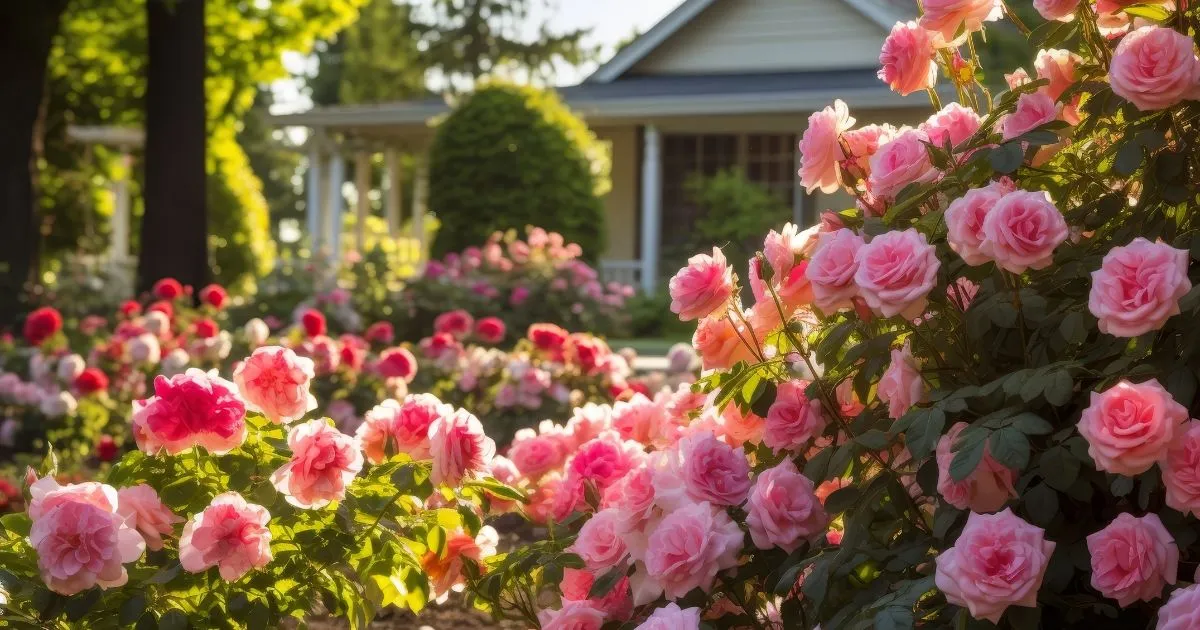Table of Contents
Roses have long been cherished for their beauty, fragrance, and symbolism. A rose garden is more than just a collection of plants; it’s a sanctuary of color, scent, and tranquility. Whether you’re a seasoned gardener or a beginner, designing a rose garden can be a rewarding experience. In this article, we’ll explore a variety of rose garden ideas to help you create a stunning outdoor space that reflects your personal style and enhances your landscape.
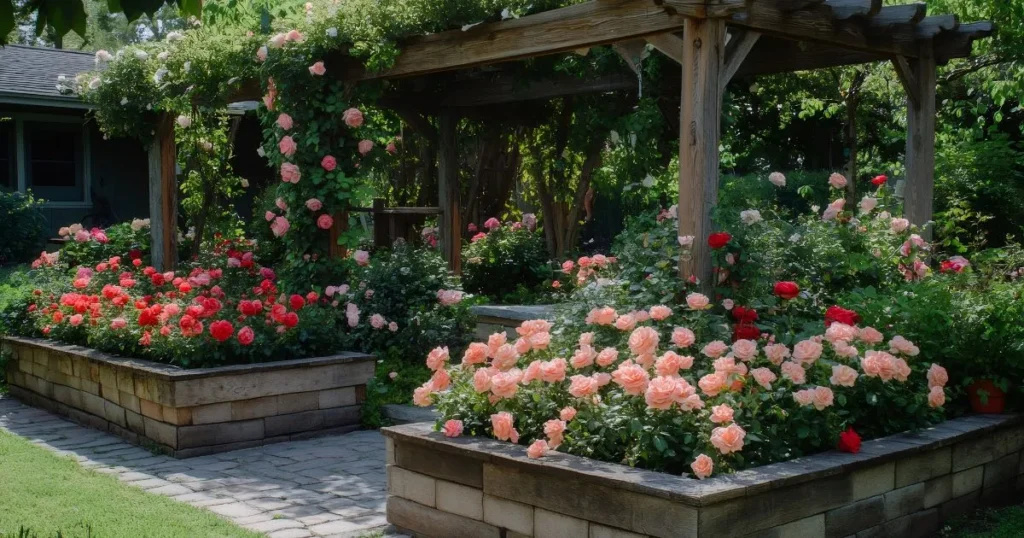
Why Choose a Rose Garden?
Roses are versatile plants that can adapt to a wide range of climates and garden styles. They come in countless varieties, from classic hybrid teas to sprawling climbers and compact shrubs. A well-designed rose garden can serve as a focal point in your yard, provide cut flowers for your home, and even attract pollinators like bees and butterflies.
Benefits of a Rose Garden
- Aesthetic Appeal: Roses are undeniably beautiful, with their lush blooms and vibrant colors.
- Fragrance: Many rose varieties are highly fragrant, adding a sensory dimension to your garden.
- Versatility: Roses can be grown in beds, containers, or as climbing plants on trellises and arbors.
- Symbolism: Roses often symbolize love, beauty, and resilience, making them a meaningful addition to any garden.
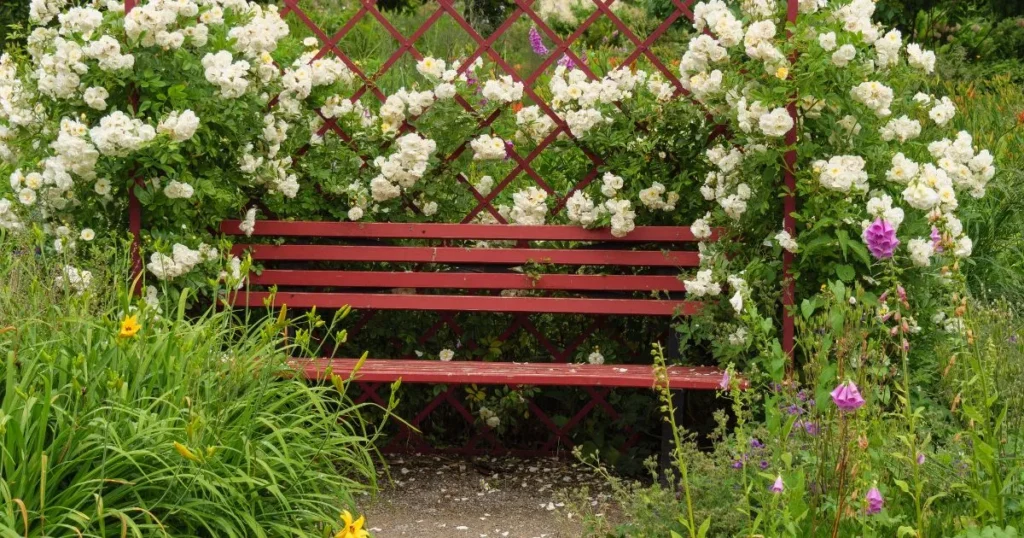
Rose Garden Ideas: Planning Your Design
Before you start planting, it’s important to plan your rose garden carefully. Consider the following factors to ensure your garden thrives:
1. Choose the Right Location
Roses need at least 6 hours of sunlight per day, so select a spot that receives ample sunlight. Ensure the area has good drainage to prevent root rot.
2. Select Rose Varieties
There are thousands of rose varieties to choose from. Here are some popular options:
- Hybrid Tea Roses: Known for their large, elegant blooms.
- Floribunda Roses: Produce clusters of flowers and are great for mass planting.
- Climbing Roses: Perfect for trellises, fences, and arbors.
- Shrub Roses: Hardy and low-maintenance, ideal for beginners.
- Groundcover Roses: Spread horizontally and are excellent for slopes or borders.
3. Consider Color Schemes
Think about the color palette you want for your rose garden. Monochromatic schemes (e.g., all white or pink roses) create a serene look, while contrasting colors (e.g., red and yellow) add vibrancy.
4. Incorporate Companion Plants
Companion plants can enhance your rose garden by providing contrast, deterring pests, and improving soil health. Consider planting lavender, catmint, or salvia alongside your roses.
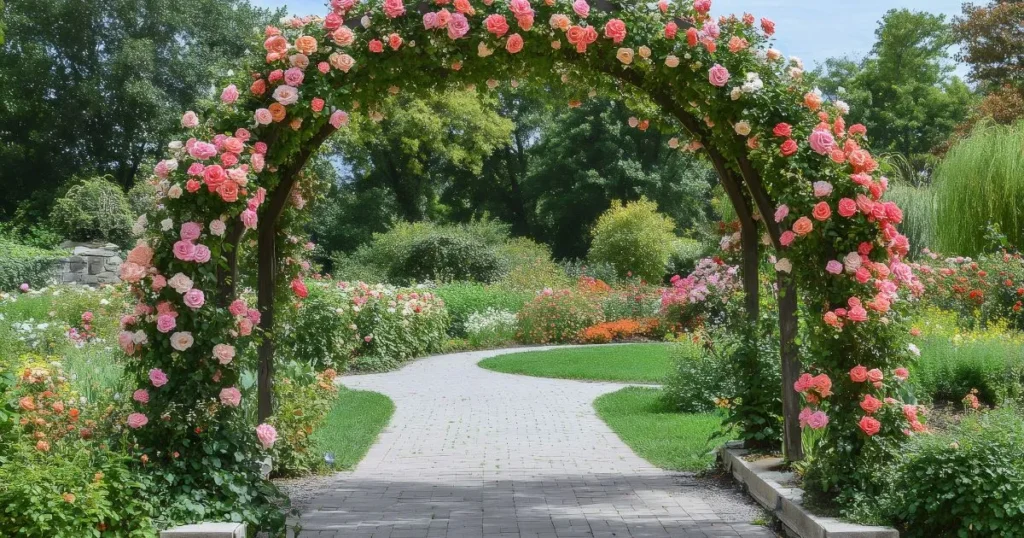
Rose Garden Ideas: Design Styles
Your rose garden can reflect your personal taste and complement your home’s architecture. Here are some design styles to inspire you:
1. Classic Formal Rose Garden
A formal rose garden features symmetrical layouts, geometric patterns, and neatly trimmed hedges. This style often includes pathways, fountains, or statues for a timeless, elegant look.
Key Elements:
- Symmetrical rose beds
- Boxwood hedges or low borders
- Central focal point (e.g., a fountain or gazebo)
2. Cottage-Style Rose Garden
A cottage-style rose garden is informal and romantic, with a mix of roses and other flowering plants. This style emphasizes a natural, slightly wild appearance.
Key Elements:
- Mixed planting of roses, perennials, and annuals
- Arbors or trellises with climbing roses
- Meandering pathways
3. Modern Rose Garden
A modern rose garden focuses on clean lines, minimalism, and bold contrasts. This style often incorporates hardscaping elements like concrete or metal.
Key Elements:
- Monochromatic color schemes
- Sleek, geometric planters
- Minimalist furniture or sculptures
4. Wildlife-Friendly Rose Garden
If you want to attract pollinators and birds, design a wildlife-friendly rose garden. Choose rose varieties with open, single blooms that provide easy access to nectar.
Key Elements:
- Native plants and wildflowers
- Bird feeders or birdbaths
- Avoid using pesticides
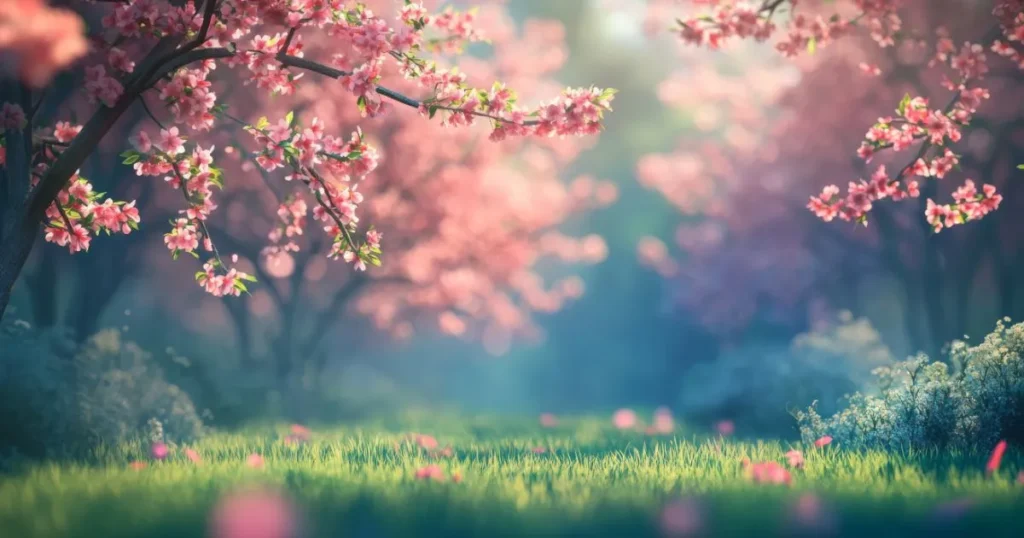
Rose Garden Ideas: Practical Tips for Success
Creating a beautiful rose garden requires more than just planting roses. Here are some practical tips to ensure your garden thrives:
1. Prepare the Soil
Roses prefer well-draining soil rich in organic matter. Amend your soil with compost or well-rotted manure before planting.
2. Plant Properly
Dig a hole twice as wide as the rose’s root ball and plant it at the same depth it was in the container. Water thoroughly after planting.
3. Mulch and Water
Apply a layer of mulch around your roses to retain moisture and suppress weeds. Water deeply once or twice a week, depending on the weather.
4. Prune Regularly
Pruning encourages healthy growth and abundant blooms. Remove dead or diseased wood and shape your roses in early spring.
5. Fertilize
Feed your roses with a balanced fertilizer in spring and midsummer to promote vigorous growth and flowering.
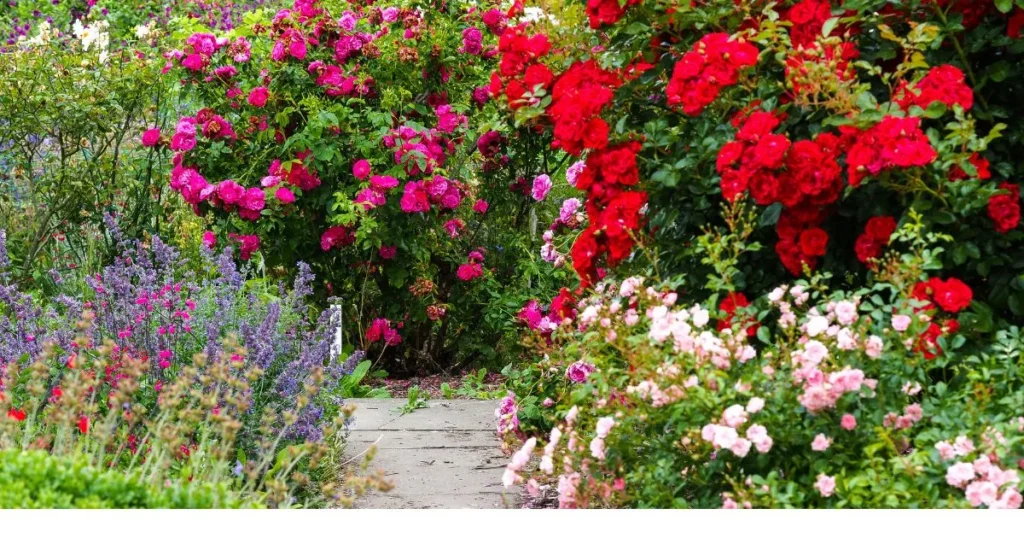
Rose Garden Ideas: Adding Decorative Elements
Enhance your rose garden with decorative elements that add charm and functionality:
1. Pathways
Gravel, brick, or stone pathways can guide visitors through your garden and prevent soil compaction around your roses.
2. Arbors and Trellises
Climbing roses look stunning on arbors and trellises. Use these structures to create vertical interest and define spaces.
3. Seating Areas
Incorporate benches, swings, or bistro sets to create cozy spots where you can relax and enjoy your garden.
4. Lighting
Add solar-powered or low-voltage lights to illuminate your garden at night and highlight your roses.
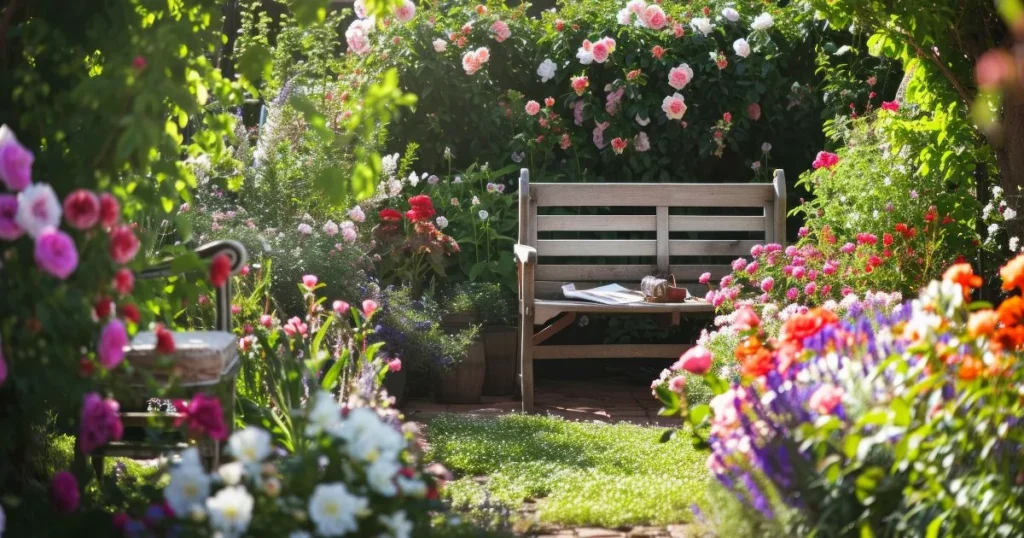
Rose Garden Ideas: Maintenance and Care
A well-maintained rose garden will reward you with years of beauty. Here’s how to keep your garden in top shape:
1. Pest Control
Watch for common rose pests like aphids and spider mites. Use organic methods like neem oil or insecticidal soap to control infestations.
2. Disease Prevention
Roses are susceptible to diseases like black spot and powdery mildew. Ensure good air circulation and avoid overhead watering to reduce the risk.
3. Deadheading
Remove spent blooms regularly to encourage new flowers and keep your garden looking tidy.
4. Winter Protection
In colder climates, protect your roses by mulching heavily and covering them with burlap or rose cones.
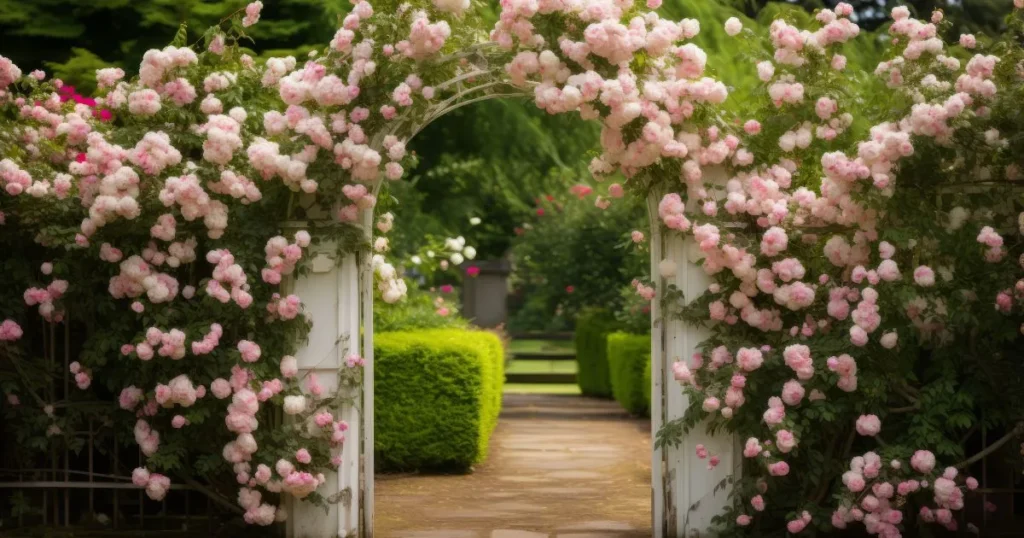
Conclusion: Bringing Your Rose Garden Ideas to Life
A rose garden is a timeless and enchanting addition to any outdoor space. By carefully planning your design, selecting the right rose varieties, and incorporating decorative elements, you can create a garden that reflects your personality and brings joy year after year. Whether you prefer a formal, cottage-style, or modern garden, the possibilities are endless when it comes to rose garden ideas.
Remember, a successful rose garden requires patience, care, and a love for these beautiful flowers. With the right approach, you can transform your yard into a blooming paradise that you’ll cherish for years to come.
FAQ: Rose Garden Ideas
1. What is the best time to plant roses?
The best time to plant roses is in early spring or fall when the weather is cool and the plants can establish their roots before extreme temperatures set in.
2. How often should I water my rose garden?
Water your roses deeply once or twice a week, depending on the weather. Ensure the soil stays moist but not waterlogged.
3. Can I grow roses in containers?
Yes, many rose varieties thrive in containers. Choose a large pot with good drainage and use high-quality potting soil.
4. What are the best companion plants for roses?
Lavender, catmint, salvia, and geraniums are excellent companion plants for roses. They provide contrast, deter pests, and improve soil health.
5. How do I prevent diseases in my rose garden?
Ensure good air circulation, avoid overhead watering, and remove any diseased leaves or branches promptly. Regularly inspect your plants for signs of disease.
6. What is deadheading, and why is it important?
Deadheading is the process of removing spent blooms. It encourages new flowers to form and keeps your garden looking neat and tidy.
7. Can I grow roses in shady areas?
Roses need at least 6 hours of sunlight per day to thrive. While some varieties can tolerate partial shade, they may not bloom as profusely.
8. How do I protect my roses in winter?
In colder climates, mulch heavily around the base of your roses and cover them with burlap or rose cones to protect them from freezing temperatures.

